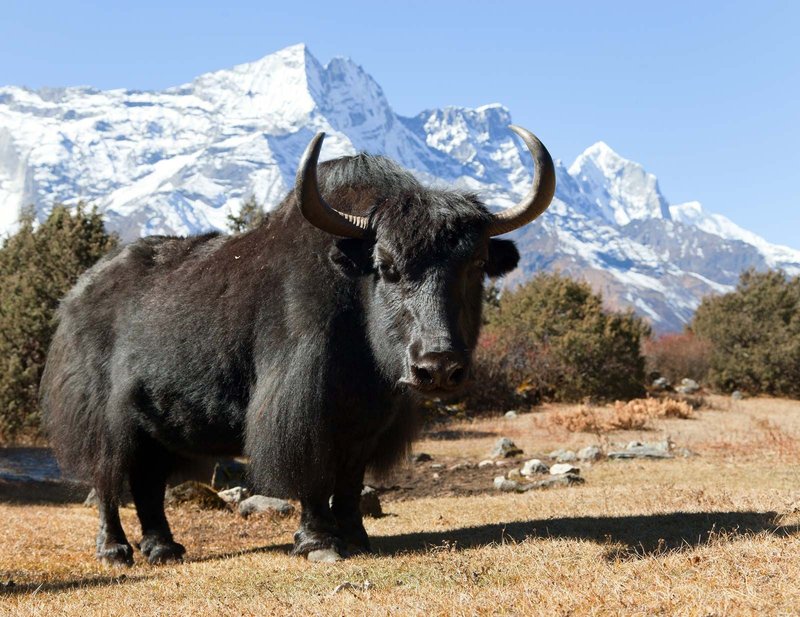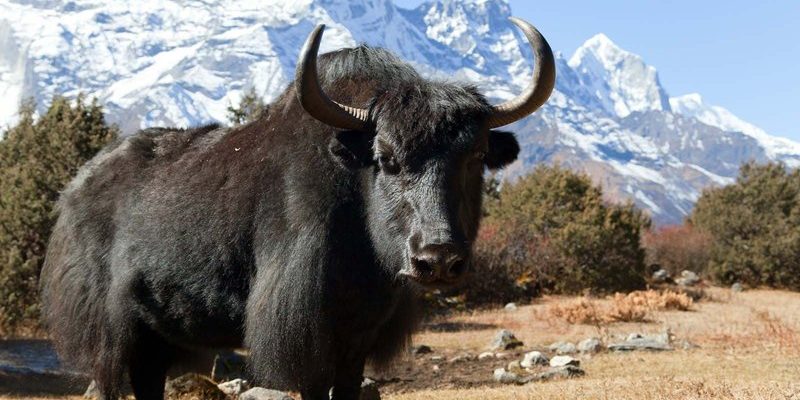
Yaks are like silent partners in their ecosystem, supporting a web of life that includes everything from tiny plants to larger predators. They help shape the landscape while providing essentials for other wildlife and human communities alike. Understanding their role offers insight into the delicate balance of nature and highlights the importance of conservation efforts.
The Basics of Yaks
Before diving deeper into their role in the ecosystem, it helps to know a bit about yaks themselves. Originating from the Tibetan Plateau, yaks are well-adapted to harsh climates. They have thick, woolly coats, wide hooves, and a stout build that makes them perfect for traversing steep and rocky terrain.
Yaks also come in two types: the domestic yak, commonly used by local communities for their milk, meat, and transportation; and the wild yak, which roams freely in the mountains. Both types are social animals, often found in herds, which helps them protect one another from predators. Their herding behavior is fascinating—have you ever seen them cluster together, tails intertwined, forming a living fortress against danger?
Grazing Impact on Vegetation
One of the most significant ways yaks contribute to their ecosystem is through their grazing habits. As they munch on grasses and shrubs, they help maintain healthy plant communities. This grazing pressure prevents any one species from taking over, which fosters biodiversity.
Here’s the thing: when yaks graze, they stimulate new plant growth. The act of nibbling on grass encourages it to regenerate quickly. Think of it like pruning a bush; it helps the plant stay vigorous and healthy. In turn, a diverse vegetative cover provides food and shelter for other species, creating a rich habitat for various birds, insects, and mammals.
Moreover, yaks are known to fertilize the soil with their waste. This natural fertilizer enhances soil quality, promoting nutrient-rich plants that support a broader spectrum of life. Without yaks, the grasslands might struggle to maintain their lushness, affecting everyone from tiny insects to large mammals.
The Role in Local Communities
Yaks are more than just ecological players; they are lifelines for many local communities. In many high-altitude regions, especially in Tibet and Nepal, yaks are invaluable for their meat, milk, and hide. The milk can be turned into cheese or yogurt, providing essential nutrition for families.
But that’s not all. Yaks are also used as pack animals, carrying heavy loads across challenging terrain. This ability allows for trade and travel between remote areas, fostering connections between different communities. Imagine a yak, laden with supplies, making its way along a narrow mountain path—it’s a lifeline for those who depend on it.
Without yaks, many of these communities would face significant challenges. Their absence would not only impact the livelihoods of the people but also disrupt local ecosystems. When we think about conservation efforts, recognizing the interdependence between yaks and human communities is crucial.
Supporting Biodiversity
Yaks play a vital role in supporting biodiversity within their habitats. As grazers, they create open spaces that allow various plant species to thrive. This, in turn, attracts a range of wildlife—from small mammals like pikas to birds that depend on the vegetation for both food and nesting sites.
You might be wondering how this all connects. Well, healthy ecosystems foster resilience. Greater biodiversity means that ecosystems can withstand changes, whether from climate shifts or human activities. Yaks contribute to this resilience by keeping the grasslands in check and ensuring that multiple species can coexist.
Moreover, the presence of yaks in the wild has been shown to influence the behavior of other animals. For example, their grazing patterns can help maintain habitats for animals like the snow leopard, which preys on the smaller mammals that thrive in yak-grazed areas. The relationship is a reminder of how interconnected our world really is.
Conservation Considerations
Despite their importance, yaks face various threats, especially from climate change and habitat loss. The rising temperatures and changing precipitation patterns in their native regions can affect the availability of food and lead to changes in their migratory patterns.
Conservation efforts are vital to ensure the survival of yaks and, by extension, the ecosystems they support. Community-led initiatives that promote sustainable farming and grazing practices can help mitigate these threats. For instance, training local herders on rotational grazing can minimize overgrazing and allow the land to recover more effectively.
In addition, protecting wild yak populations is essential. These animals are often threatened by poaching and habitat encroachment. Conservationists are working hard to educate communities about the benefits of preserving yak populations, not only for ecological reasons but for cultural heritage as well.
The Importance of Yaks in Climate Resilience
Yaks also play a role in helping their ecosystems adapt to climate change. Their grazing practices naturally enhance soil carbon storage, which is crucial for mitigating greenhouse gases. By maintaining healthy grasslands, yaks contribute to a process that helps combat climate change.
Here’s the thing: when the soil is rich and healthy, it can better absorb water and support a variety of plant life. This resilience is key in areas that face environmental stressors where floods or droughts can be more common due to climate fluctuations.
By supporting yak populations, we are not just protecting an animal; we are investing in the health of our planet. The more we pay attention to these robust creatures and their habitats, the better equipped we are to face the challenges that come our way.
The yak is much more than a fuzzy animal roaming the Himalayan mountains; it is a linchpin in its ecosystem, supporting both wildlife and human communities. From their grazing habits that nurture diverse plant life to their role as essential resources for local people, yaks embody the intricate connections found in nature.
By understanding the yak’s role in its ecosystem, we can appreciate the importance of protecting these magnificent creatures. The next time you think of yaks, remember their contributions to biodiversity, local cultures, and climate resilience. Let’s support conservation efforts and embrace the beauty and necessity of yaks in our world. Whether through direct action or simply spreading awareness, we all can play a part in ensuring that these remarkable animals continue to thrive for generations to come.

